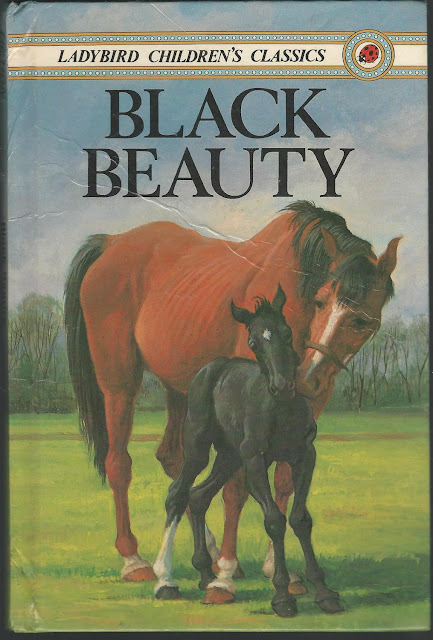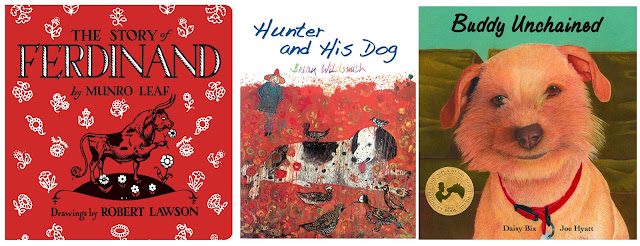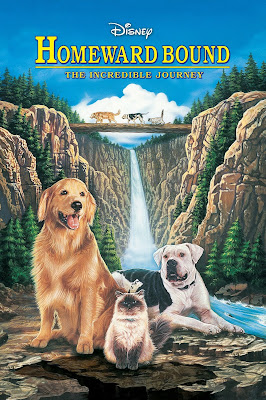Visual Research: ‘Black Beauty’ and more
I wanted to look into children books, since most children book contains animals and some even about animal cruelty. For example, ‘Black Beauty’ by Anna Sewell. I loved this book when I was younger, I think around 10 years old or younger, I am also fond of horses so I loved and still love this book.
It is a story about a handsome horse named Black Beauty who narrates the adventure of his carefree life as a colt on his English farm. It encourages the viewer to be kind to animals and not to harm them as they think and feel like us. This book is still popular till this day, while its was written in the Victorian age, 1877. It also started the popularity of autobiographical stories about animals.
“The story shows how Anna Sewell was not only concerned with animal abuse, but she was also concerned, whether directly or indirectly, with many of the social issues of her time, such as poverty, unemployment, drinking, etc. She says, in her introduction, that her purpose in writing, is ‘to induce kindness, sympathy, and an understanding treatment of horses.’ Through such kindness and understanding, children can easily make a leap from horse-human relationships to human-human relationships” (Wasfy, A., 2019, p.180)
Paul Collins says “Anna Sewell undertook one of the most radical alterations of narrative in all of 19th century literature making a horse talk, and making him talk as a horse. Black Beauty is not a fable: he does not flatter us with a cute simulation of humanity.” (Wasfy, A., 2019, p.183) This is important as we are once again reminded of the illusion that animals think and feel like humans. Implying that it’s the only way we can feel sympathy for them, is if they are like us. This is where some animal cruelty stories and books for children fail, because there is many animal books and films that help us have sympathy for animals who is described and designed in a way too similar to humans, thus making the book or film more about human compassion then it does for actual animals themselves. Making children grow up with the wrong mindset on animals. However, it could be the only way kids understand how animals feel pain, by comparing it with their own. But we must make sure that animals do not cross the line of humanity and we keep them as animals, just like Sewell does with black beauty, as she makes sure the horse doesn’t want try to talk or do human things, but still narrates the horse with its own natural, instinctual thoughts.
Design style for children’s awareness books on animal cruelty;
The designs for these types of books are always kept neutral toned, with natural colours. Perhaps because bold colours would be highly inappropriate in trying to maintain a serious topic of animal cruelty. We don’t want children to think its a happy story, even if the ending is content.
Nevertheless, there are animal cruelty books with stronger and bolder book covers, some examples are below. This also be to provoke a powerful statement and make a book and its story stand out, quite literally. Again kids are more likely to pick up a book with fun colours, so perhaps this types of colour schemes and fun illustrations and good way to hook children to read the story and raise awareness of animal cruelty, that thus they learn to have compassion and sympathy for them as they grow older.
On the other hand, we have the children books with simply animals as their friends. In other words, books for kids about compassion for animals. There is an incredible about of books for kids that contain this. To prove this I asked my sister a question since she as a 7 year old daughter “how many of her books have animals in it?” And she answered “pretty much all of them!” And again I’m reminded of my childhood and all the books i read and my favourite ones were ones with animals in it. Some I’ve written below;
The Tiger Who Came to Tea is a short children's story, first published by HarperCollins in 1968, written and illustrated by Judith Kerr. The book concerns a girl called Sophie, her mother, and an anthropomorphised tiger who invites himself to their afternoon tea and consumes all the food and drink they have. This is a good example of kids to being taught life lessons through animal books to become better people as they grow. The main purpose is for children to learn that sometimes with need to sacrifice things to help others. Tigers are presented as scary, dangerous and normally the villain of stories, but in this story he just wants to have tea and eat a lot! The book still contains the instincts of a tiger, for example he eats messily and in big bites and just simply goes away without a thought. It makes sure to remind us he is an animal and although he is a animal the little girl sacrificed all her food and water for the tiger and even got tiger food for it after, without the tiger giving her anything in return. Importantly, it shows we need to help animals and expect nothing in return and that’s okay.


















Comments
Post a Comment